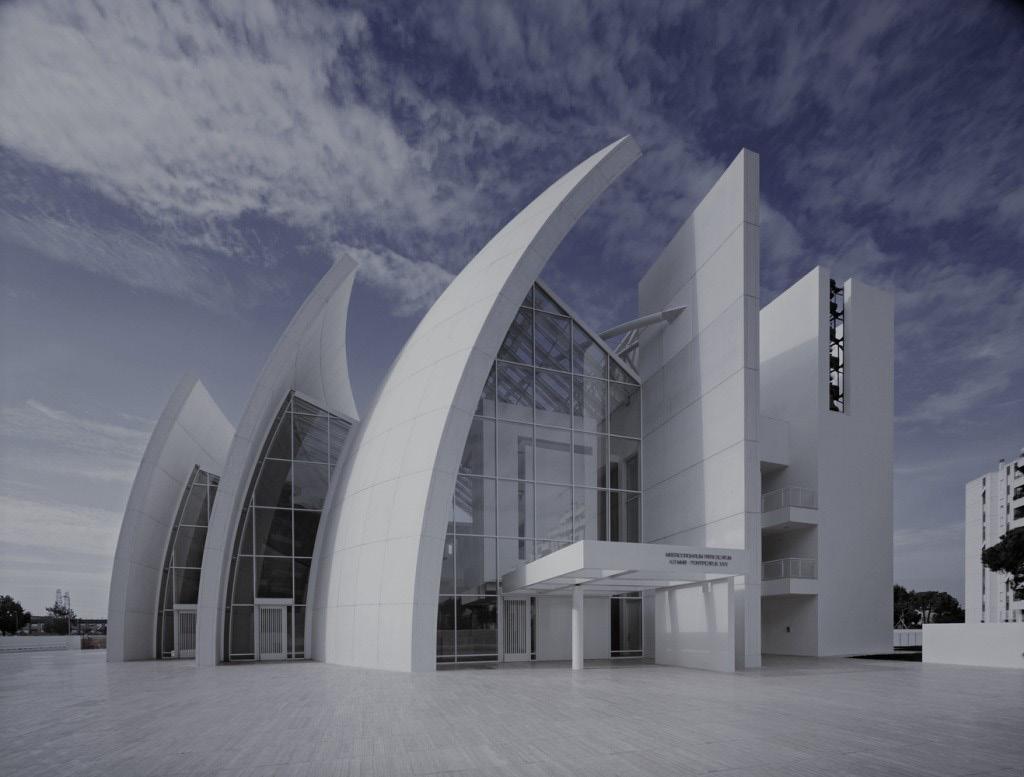RICHARD A. MEIER



Richard Meier, in full Richard Alan Meier, (born October 12, 1934, Newark, New Jersey, U.S.), American architect noted for his refinements of and variations on classic Modernist principles: pure geometry, open space, and an emphasis on light. A winner of the Pritzker Architecture Prize in 1984, Meier has designed several iconic buildings including the Barcelona Museum of Contemporary Art, the Getty Center in Los Angeles, the High Museum of Art in Atlanta, and San Jose City Hall.
These structures are characterized by geometric clarity and order, which are often punctuated curving ramps, railings, and by a contrast between the light-filled, transparent surfaces of public spaces and the solid white surfaces of interior, private spaces. They all embody Meier’s description of his goals: “I am expanding and elaborating what I consider to be the formal base of Modern movement.I work with volume and surface, I manipulate forms in light, changes in scale and view, movement and stasis.”
BREAK
He formed a loose association with a group of young architects, known as the “New York Five,” who advocated a return to Modernist, rational architecture. They dominated Modernist architecture in the 1960s with mostly white buildings, clean lines, and minimal ornament.



Le Corbusier was a great influence, but there are many influences and they are constantly changing. Frank Lloyd Wright was a great architect, and I could not have done my parent's house the way that I did, without being overwhelmed by Falling Water.


WE
DOUGLAS HOUSE GETTY CENTER
Harbor Springs, Michigan
Hovering over the shores of Lake Michigan, the Douglas House was built by Richard Meier in 1971-1973 for Jim and Jean Douglas. The house is gently placed on a steep slope over the water, almost as if it is floating amongst the trees. So steep is the slope to the water that the house appears to have been dropped into the site, a machine-crafted object that has landed in a natural world.






As is typical of Meier buildings, the house is completely white made with reinforced concrete and glass except two steel pipes that extend from the chimney up to the roof, framing views at entry level. The white of the house allows it to stick out as a man-made object on the landscape during the changing colors of the seasons, which can be experienced inside through the large glass panels.



The layout establishes a dialogue between the angle of intersection and a number of curvilinear forms that are largely derived from the contours of the site inflected by the Freeway, the metropolitan grid and the natural topography; the overall parts relate to both the City of Los Angeles and the Santa Monica Mountains.

The Getty Center occupies a narrow, hilly stretch high above the San Diego Freeway in Los Angeles California. Jutting southward from the Santa Monica Mountains, the museum’s acropolis-like stature affords spectacular views over the city, the mountains and the ocean.




Like much of his work, it features intersecting planes, and, in its crisp geometric whiteness, it provides a sharp contrast to the natural setting that surrounds it.

1934 (AGE 88)
(1973)
(1997) LOS ANGLES, US
20WU0401005
Jubilee Church, Italy
Barcelona Museum of Contemporary Art, Spain Smith House, US
High Museum of Art, Georgia
Des Moines Art Centre Addition, Lowa
“EITHER
THE TRADITION OR ENHANCE IT, BUT
SHOULD STILL BE CONNECTED TO THAT PAST”
Smith House, US
Stuttgart Residence, Germany
Neugebauer House























